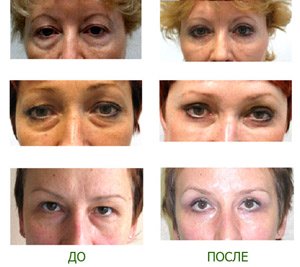ADDRESS:
Degtyarevskaya st., 48
Kyiv
RECEPTION OF PATIENTS:
Mon-Fri 8:00-18:00
Sat 9:00-18:00
Menu
ADDRESS:
Degtyarevskaya st., 48
Kyiv
RECEPTION OF PATIENTS:
Mon-Fri 8:00-18:00
Sat 9:00-18:00
Home » Lower eyelid surgery – lower blepharoplasty
 The most attractive part of the human face is the eyes; they are the ones that attract attention first. Therefore, we ourselves and those around us immediately see the slightest imperfections in the skin of this area, which is very delicate and vulnerable. It is sensitive to aggressive exogenous factors and is primarily susceptible to age-related changes.
Loss of tone, sagging skin, wrinkles under the eyes, unattractive bags significantly spoil the appearance and age. A plastic surgeon will help to effectively solve the problem, and to correct defects in the lower eyelid area, a special operation is performed – lower blepharoplasty.
The most attractive part of the human face is the eyes; they are the ones that attract attention first. Therefore, we ourselves and those around us immediately see the slightest imperfections in the skin of this area, which is very delicate and vulnerable. It is sensitive to aggressive exogenous factors and is primarily susceptible to age-related changes.
Loss of tone, sagging skin, wrinkles under the eyes, unattractive bags significantly spoil the appearance and age. A plastic surgeon will help to effectively solve the problem, and to correct defects in the lower eyelid area, a special operation is performed – lower blepharoplasty.
RECEPTION OF PATIENTS:
Mon-Fri 8:00-18:00 | Sat 9:00-18:00
ADDRESS:
Degtyarevskaya st., 48, Kyiv
The use of content and photo materials of the site without the consent of the copyright holder is not allowed!
License – order of the Ministry of Health of Ukraine dated June 1, 2017. No. 592
License for Dentistry – order of the Ministry of Health of Ukraine dated December 15, 2022 No. 2270
© 2023 | AVICENNA MED – center for Pronovative Medicine. Kyiv, Ukraine
RECEPTION OF PATIENTS:
Mon-Fri 8:00-18:00 Sat 9:00-18:00
ADDRESS:
Degtyarevskaya st., 48, Kyiv
License – order of the Ministry of Health of Ukraine dated June 1, 2017. No. 592
License for Dentistry – order of the Ministry of Health of Ukraine dated December 15, 2022 No. 2270
The use of content and photo materials of the site without the consent of the copyright holder is not allowed!
© 2023 | AVICENNA MED – center for Pronovative Medicine. Kyiv, Ukraine